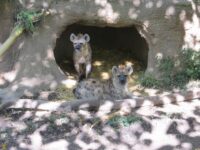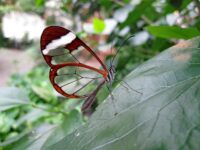Life on Earth today is fantastically diverse, as even within just the animal kingdom more than 1 million species have been discovered. They all have their own role in the ecosystem, defined as their niche. While organisms have always had their own niches in the environment, prior to the geological time period known as the Cambrian, the biodiversity of species was extremely limited. This means that the ecosystems of the Ediacaran period, the period before the Cambrian, were simple with many fewer niches being filled. After the Ediacaran period, there was a radiation of species that occurred, which became known as the Cambrian explosion, and it shaped life on Earth today.
Life in the Ediacaran period has been described as almost alien to the life seen on Earth today. Still contained within the ocean, animals in the Ediacaran were primarily soft-bodied seafloor creatures that resembled fronds or ribbons. These animals existed alongside sponges and unicellular organisms for nearly 80 million years, until life on Earth took an abrupt and explosive turn. Suddenly, animals began to develop an entirely different anatomy that appeared similar to species living on Earth today. These new Cambrian developments marked the extinction of many species that failed to adapt, bringing about the end of the Ediacaran period. In fact, since the Cambrian explosion, there has been almost no major anatomical reorganizations of animal species.
since the Cambrian explosion, there has been almost no major anatomical reorganizations of animal species.
The distinct differences between Ediacaran and Cambrian life are characterized by alterations in the animals’ behaviors and biology. Biomineralization, or the use of minerals in the environment to form a shell or skeleton, led to development of hard-bodied organisms with a distinct advantage over Ediacaran life. This adaptation, along with the development of environmental manipulation such as burrowing, most likely led to the appearance of macroscopic predation in the Cambrian period. Microbes on the seafloor were the only prey of predators living in the Ediacaran period, but now in the Cambrian world, any unprotected organism was at risk. Many Ediacaran species were unable to adapt to macroscopic predation, and their populations were decimated; others evolved and thrived, starting the predator-prey race for survival. In taxonomy, or the science of classifying living things, organisms are separated into kingdoms which can be broken down into separate phyla. Between 20 and 35 major phyla of the animal kingdom that are living today can be traced back to the Cambrian explosion. This is remarkable because the entire kingdom of Animalia contains only 36 known major phyla and the Cambrian explosion spanned less than 25 million years, which is extremely short in geologic time.
Biomineralization, or the use of minerals in the environment to form a shell or skeleton, led to development of hard-bodied organisms with a distinct advantage over Ediacaran life.
The major components of evolution, adaptation and mutation, were the driving forces of the diversification that occurred during the Cambrian explosion. Before this time, life on Earth was simple and uniform, but macroscopic predation allowed for only animals with advantageous traits to survive. This evolutionary pressure created a deeply complex food web from a series of speciation events. Each speciation event led to an abundance of new species from a common ancestor, filling a role in an ecosystem that still persists to this day. Researchers still haven’t agreed on a concrete explanation, but there are many theories that speculate what could have happened to push life on Earth toward rapid diversification during the Cambrian explosion. One popular theory, known as biotic replacement, suggests that it could have been a series of microevolutions that pressured certain species into extinction. Another theory, referred to as the catastrophe, argues that there may have been a major event that disrupted life on Earth. As species repopulated, the species that held the traits necessary for rapid diversification were simply better equipped to survive. The development and spread of these traits allowed species to occupy specific niches in the environment; without them, the speciation events would have been stagnated.
Each speciation event led to an abundance of new species from a common ancestor, filling a role in an ecosystem that still persists to this day.
Continuing to study the underlying mechanisms of the Cambrian explosion today helps scientists to better understand the evolution of life on Earth. The Ediacaran species diversified during the Cambrian explosion into the animal phyla we recognize today, but what about the species that failed to survive? What branches of life have yet to be undercovered, and what secrets do they hold about the hidden ancestry of all animals on Earth?
Source: 1
Image source: Pixabay



